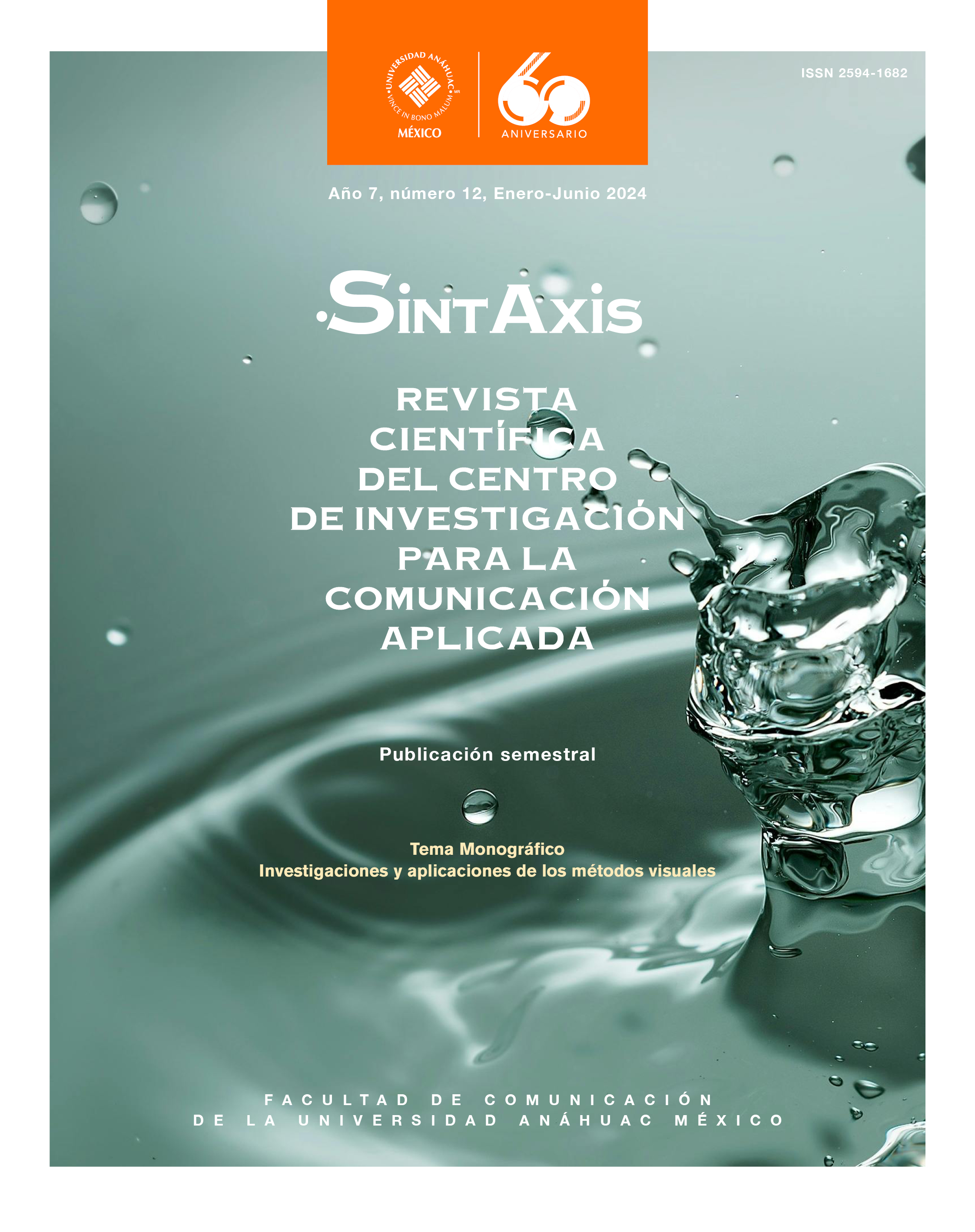Digital communication of ultra-processed cereals between young people in France and Mexico: Collaborative camera and eye tracking
Main Article Content
Abstract
Highly processed cereals (HPC) are products that, in society's perception, are located in an ambiguous zone between what is beneficial and what is harmful to health. In this ongoing study, collaborative camera and eye-tracking techniques are used with young people from Mexico City and Chambéry, with the purpose of understanding their main reactions to the advertising of highly processed cereals on the socio-digital platform YouTube. Although the study is still in development, it can be anticipated that similar behaviors are observed in young people. The collaborative camera will help identify involuntary behavior patterns, physical responses and communication codes not expressed by other methods used by youth to categorize them. This will allow possible connections to be established between various situations and contexts, which could be used in the creation of more effective and beneficial health messages for communication.
Downloads
PLUMX Metrics
Article Details

This work is licensed under a Creative Commons Attribution-NonCommercial-NoDerivatives 4.0 International License.
The author keeps the property rights with no restriction whatsoever and guarantees the magazine the right to be the first publication of the work. The author is free to deposit the published version in any other medium, such as an institutional archive or on his own website.
References
Cereal F.A.C.T.S. (20 de agosto de 2013). Just give me the FACTS! Obtenido de www.cerealfacts.org
Bourdieu, P. (2010). El sentido social del gusto. Ciudad de México: Siglo Veintiuno Editores.
Boutaud, J.-J. (2005). LE SENS GOURMAND de la commensalité –du goût– des aliments. Dijon: Jean-Paul Rocher Editeur.
Boutaud, J.-J. (2013). Comunicarse sobre el gusto: del habla al método. Revista de Estudios de Comunicación, 215-231. https://www.redalyc.org/journal/3606/360674839001/html/
Dion, D. (2007). The visual anthropology as proposed by Jean Rouch: a new methodology to study consumer experiences. Conservatoire National des Arts et Métiers Paris, 2-7. https://www.researchgate.net/publication/258246165_The_Contribution_made_by_Visual_Anthropology_to_the_Study_of_Consumption_Behavior
Dion, D. (2016). The visual anthropology as proposed by Jean Rouch: a new methodology to study consumer experiences. Conservatoire National des Arts et Métiers Paris.
Ekman, P., Oster, H. (1979). Expresiones faciales de la emoción. Annual review of Psychology, 527-554. DOI: https://doi.org/10.1146/annurev.ps.30.020179.002523
Ekman, P., Friesen, W. V., Tomkins, S. (1971). Facial Affect Scoring Tecnique: A first validity story. Semiótica, 37-38. DOI: https://doi.org/10.1515/semi.1971.3.1.37
Holmqvist, K., Nyström, M., Andersson, R., Dewhurst, R., Jarodzka, H.,, Weijer, J. v. (2011). Eye Tracking: A comprehensive guide to methods and measures. Oxford: OUP Oxford.
Just, M. A., Carpenter, P. A. (1976). The role of eye-fixation research in cognitive psychology. Behavior Research Methods, Instrumentation, 139-143. DOI: https://doi.org/10.3758/BF03201761
Nosnik, A. (2014). Teoría de la Comunicación Productiva. Exploraciones más allá de la retroalimentación. México: HOMOSAPIENS.
Pink, S. (2006). The future of visual anthropology, engaging the senses. Londres: Routledge. DOI: https://doi.org/10.4324/9780203003596
Real Eye. (03 de julio de 2021). 100% basado en humanos y en línea Herramientas de neuromarketing. Obtenido de https://www.realeye.io/es/
Rebeil Corella, M. A., Flores Torres, J. L., Prado Hurtado, R. I. (2018). Videos engañosos de cereales ultraprocesados industrialmente: Métodos visuales para la conciencia social. Tenerife: Cuadernos Artesanos de Comunicación.
Rouch, J. (1995). The camera and man. En P. Hockings, Principles of Visual Anthropology (págs. 79-98). Berlin: Mouton de Gruytere. DOI: https://doi.org/10.1515/9783110290691.79
Rovira, C. (2016). La metodología del eye tracker: de la investigaci n de la lectura al estudio de mapas conceptuales. Hipertext.net [Online], 1-13.

